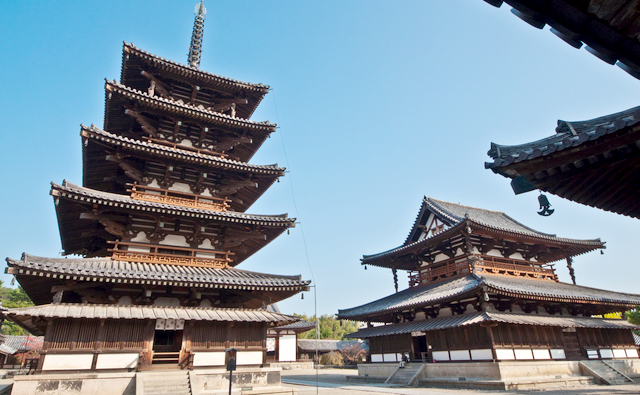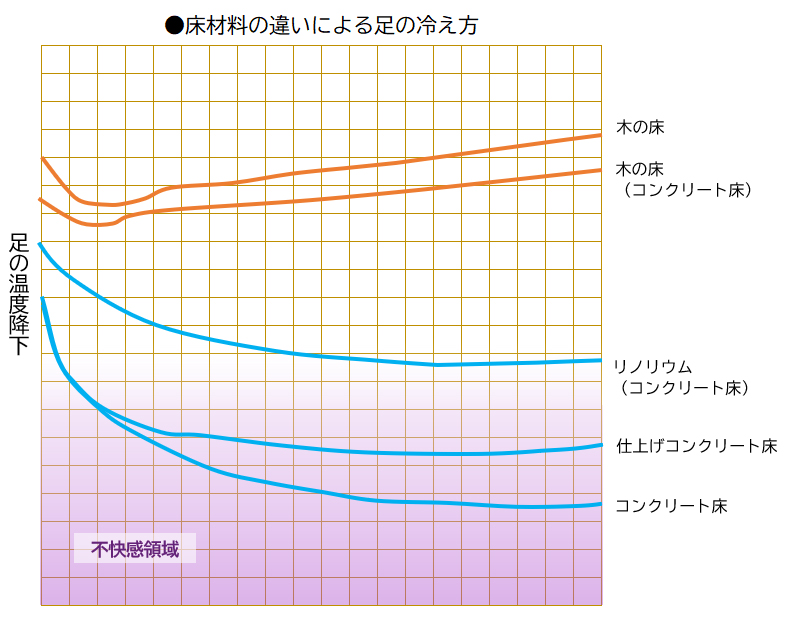Know wooden houses
Europe is called “stone culture”, while Japan is called “wood culture”.
Horyuji Temple, the oldest wooden building in the world registered under the World Heritage Convention, uses cypress, which is more than 1000 years old, as the main structural material such as pillars and beams.

According to a study by Professor Jiro Kohara of Chiba Institute of Technology, cypress’s bending strength and compressive strength gradually increased until about 200 years, then gradually has been decreasing, and 1000 years later, today, the strength is said to be almost the same as when it was founded.
Horyuji Temple is more than 1300 years old, but it is said that it will continue to be what it is today for another 1000 years.
Even after the trees have been cut down and used in buildings, they still be alive and retain their beautiful appearance.
Why do you feel that “a wooden house is good”?
When we look at the annual rings and grain of wood, we feel that something is soothing. This can be due to Japanese aesthetics and views of nature. So why do you feel comfortable with a wooden house?
It is said that “wood grain” is one of the factors.
Professor Toshimitsu Musha’s group at Tokyo Institute of Technology states that “1 / f shaking”, which is one of the shaking of radio waves (communication noise) that occurs during telecommunications, is related to comfort.
In other words, when “regular” and “irregular” are in harmony, they are “fluctuations of 1 / f”, and at that time, people feel comfortable.
When I applied this to familiar things, I found that there are things that have “1 / f fluctuation” in the texture, patterns, art, and even music.
For example, the grain pattern of wood, the tatami mats made by knitting rushes one by one, and the handmade udon noodles of various thicknesses, each of which is not uniform and has a tasteful shape in some places. You feel at ease in the state where this regular and irregular thing is in harmony.
You often see wood grain printed on plastic or metal, or paper or film with wood grain printed on it. This is an example taken because the wood grain pattern makes you feel at ease.
The feel of comfort when seeing such wood grain and new tatami mats is not only for the feeling but also based on the scientific reasons.
The utility of wood
In a wooden house, you don’t just feel comfortable looking at the grain of wood.
The utility of wood also has the secret of comfort.①Humidity control function
Have you ever had a damp cloth or clothing in a closed closet, or mold on a chest of drawers that fits snugly against a wall?
This is due to the “condensation phenomenon”, which occurs when the temperature inside the room becomes abnormally high or when the difference between the temperature inside and outside the room becomes large.
Wood is not completely free from the “condensation phenomenon”, but it has good heat retention, is hard to cool, and is hygroscopic, so it is hard to cause condensation. Even if it occurs, it has the function of absorbing moisture and preventing condensation.
When you touch the wood around you, you can’t feel the water at first glance, but the tissue called phloem contains water, though you can’t see it.
Dry wood contains water about 12 to 15% of its weight.
For example, the pillars used in a wooden house with a post and beam construction method are 10.5 cm x 10.5 cm x 3 m square lumber, which contains the water of content of three beers.
And when the humidity becomes high, it absorbs the humidity in the air up to about 30%, and when it dries, it releases this moisture.
In this way, wood has a “humidity control function” that absorbs and releases moisture in the air according to the surrounding humidity, but inorganic materials cannot perform such an action, so it causes condensation.②Function that is difficult to transfer heat
The main components of wood are cellulose and lignin.
Lignin, in simple terms, acts as an adhesive to harden the cell wall.
Cellulose is the main component of plant cell walls and plant fibers.
There is “thermal conductivity” as a measure to transfer heat.
Thermal conductivity refers to a value that indicates the ease of heat transfer, and the larger the value, the easier it is to transfer heat.
According to this thermal conductivity, when water is 1, wood is 0.5 and iron is 105. It indicates that iron transfers heat 200 times faster than wood.
By the way, concrete transfers heat 3 to 4 times faster than wood.
The results of an experiment conducted by the Research Institute of Environmental Medicine, Nagoya University on how to cool the feet due to the difference in floor materials are as follows.

As you can see from this graph, floors made of wood take little skin temperature from the feet.
This leads to the fact that wood is an excellent housing material that creates a comfortable living environment because it has excellent heat retention and heat insulation properties.
Since wood has been used for drainboards in the bathroom and pot catchers for a long time, it can be said that it is a wisdom of life that utilizes the nature of wood that does not easily transfer heat.③Elasticity function
When walking indoors, if the floor is hard, you have to take all the impact of walking with your feet.
Therefore, it is difficult to walk on a hard floor and you will get tired in your feet.
Also, when walking, it is said that 20 to 30% of the body weight is applied to the joints of the foot, and the burden on the joints also increases.
Wood is a material that absorbs shocks moderately, reducing the strain on children’s knees and ankles.④Light and sound absorption
The eyes are the most sensitive organs in the human body. When the eyes get tired, the whole body gets tired.
The human eye dislikes glare in the house and prefers calm light.
Light with a reflectance of 50 to 60% is considered to be the most comfortable for the human eye.
This is why we use wood and lusterless, uneven materials on the ceilings and walls of houses to keep out direct sunlight.
The most suitable reflectance for humans is cypress and tatami mats, followed by cedar and shoji paper.
Japanese-style rooms in a wooden house of the post and beam construction method use cedar and cypress pillars, cedar ceiling boards, shoji screens, and tatami mats. Therefore, the light is gentle and soothes the feelings of the residents. This is due to the properties of these materials.
In addition, wood is said to have the strongest function of absorbing ultraviolet rays that adversely affect the eyes.
Wood also has moderate sound absorption and reverberation effects.
The Miyazaki Prefectural Arts Theater Concert Hall, which received the greatest acclaim from the world-famous violinist Isaac Stern, uses abundant zelkova (produced by Aya Forestry Office) in the interior, and is also known as the “zelkova hall”, giving maximum consideration to sound.
Wood is the most suitable material for the places that care about the sonic sound.
The graph below compares the sound absorption coefficient of wood with other building materials.
It was investigated at the frequency (500 Hz), which is the midrange of human speech, and it can be seen that the sound absorption coefficient of wood and tatami mats is better than that of glass and concrete.
⑤Wood strength
Which do you think is stronger, iron or wood?
If you try to tear off iron and wood of the same thickness, iron requires more force than wood.
However, when comparing iron and wood of the same weight, wood is stronger.
Also, when comparing the compressive strength per weight, cedar is 5 times stronger than concrete, and tensile strength is 4 times stronger.
In a country like Japan where there are many earthquakes, building a house with light and strong wood has a great advantage.
The seismic force (vibration energy) that a building receives in an earthquake of the same seismic intensity is proportional to the gravity of the building, so if the house has the same strength, the wooden house will be less damaged by the earthquake.
Looking at the results of surveys on major earthquake damage in the past, it does not necessarily mean that wooden houses collapsed and reinforced concrete houses and steel-framed houses remained.
Almost no wooden houses have collapsed in the Niigata earthquake.
In the Great Kanto Earthquake, 5% of reinforced concrete buildings collapsed, while only 1% of wooden buildings collapsed.
In the Great Hanshin-Awaji Earthquake of January 1995, a large number of wooden houses collapsed, and a rumor that wooden houses were vulnerable to earthquakes flies around, however most of the collapsed wooden houses were built before the revision of the Building Standards Law in 1980. If the houses are built based on the revised Building Standards Law, the wooden house with the post and beam construction method is not weaker than the reinforced concrete, steel frame construction or the 2×4 construction method with respect to the earthquake.